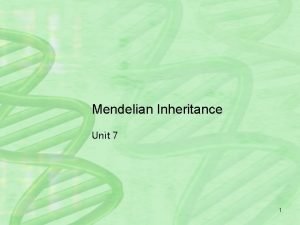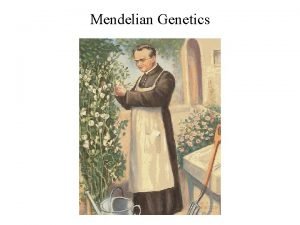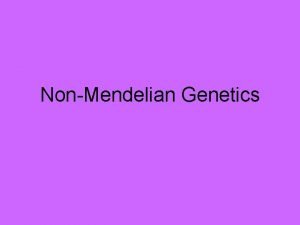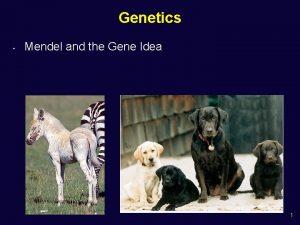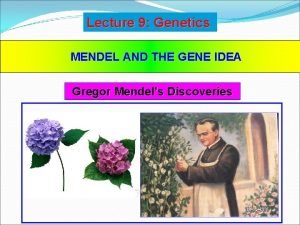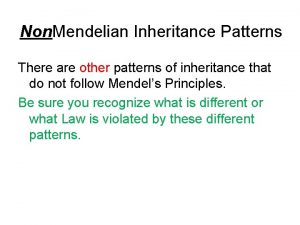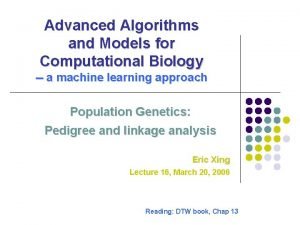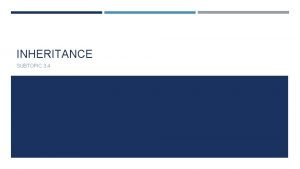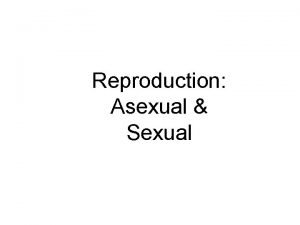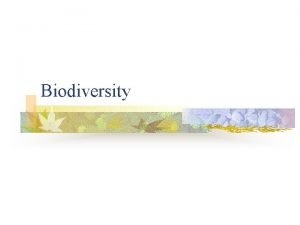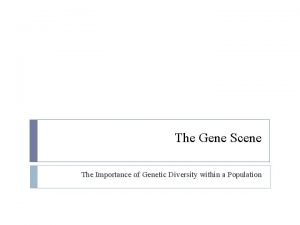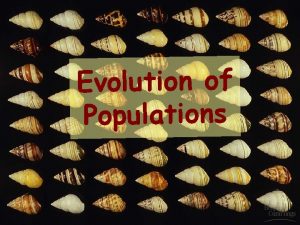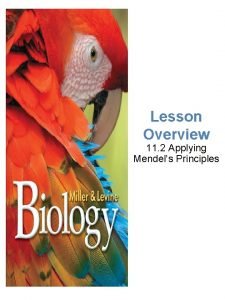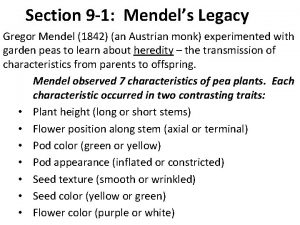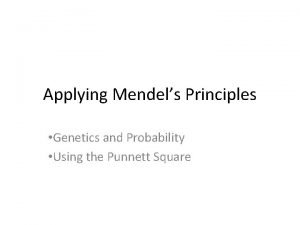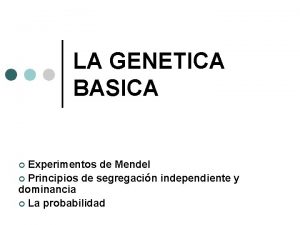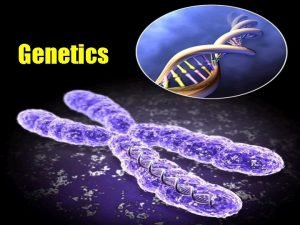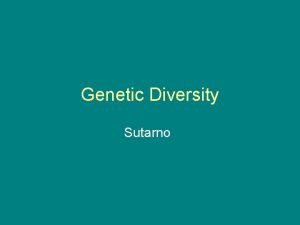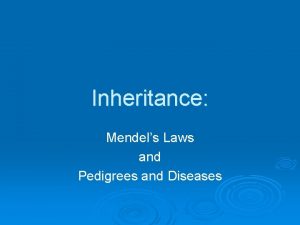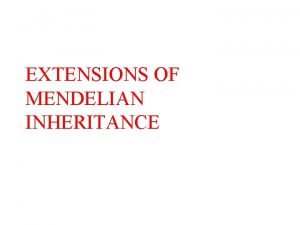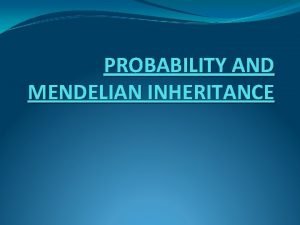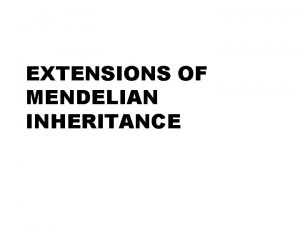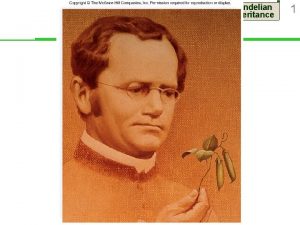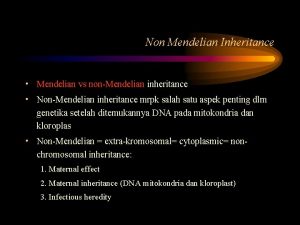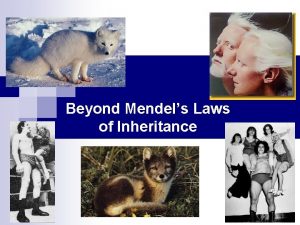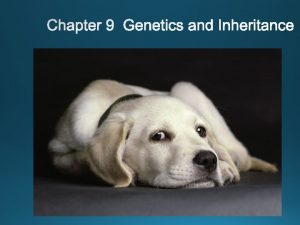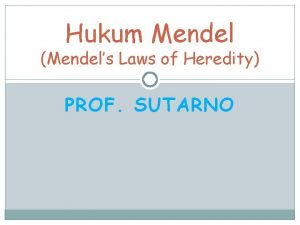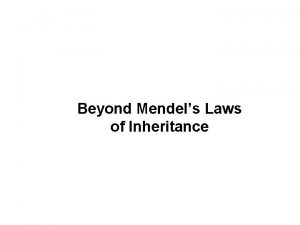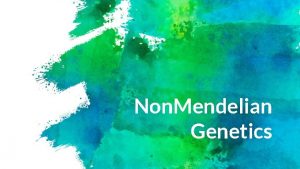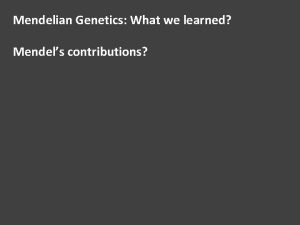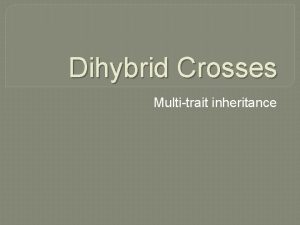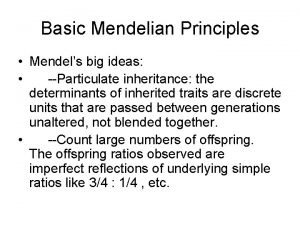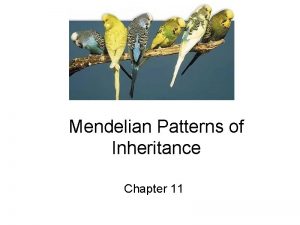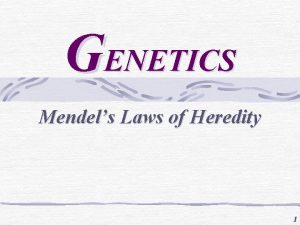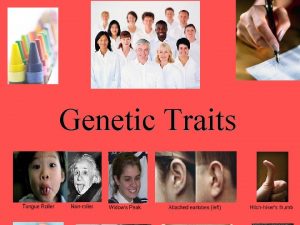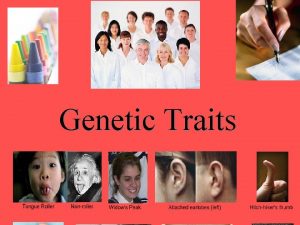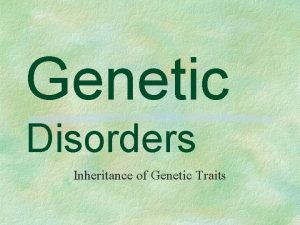Genetic Diversity Sutarno Pendahuluan Mendelian Inheritance Mendels Laws



































- Slides: 35

Genetic Diversity Sutarno

Pendahuluan • Mendelian Inheritance • Mendel's Laws of Inheritance : • The Law of Segregation : Each allele possessed by a parent will be passed into separate gametes during meiosis. • The Law of Independent Assortment : In each gamete, alleles of one gene separate independently of all other genes, allowing for new combinations of alleles through recombination. • The Law of Dominance : Each gene has two alleles, one inherited from each parent. Alleles are either dominant , co-dominant , or recessive in their expression; dominant alleles mask the expression of recessive alleles.

Mendel’s Experiments



Genetic Diversity? • Genetic diversity refers to the variation at the level of individual genes (polymorphism), and provides a mechanism for populations to adapt to their ever-changing environment. • The more variation, the better the chance that at least some of the individuals will have an allelic variant that is suited for the new environment, and will produce offspring with the variant that will in turn reproduce and continue the population into subsequent generations.

Introduction to Genetics • ● Cells • ● Genetics

Introduction to Genetics ● Cells − Cell structure and components − Cell cycle • ● Genes • ● Genetics

Cells – the building blocks of life

Prokaryotic vs. Eukaryotic cells

Cell Composition

Macromolecules in the cell • • • ● Polysaccharides: chains of sugars used to store energy ● Lipids, fats: chains of fatty acids used to build membranes ● Proteins: chains of amino acids used to execute processes • ● DNA/RNA: • chains of nucleotides used to process information

Introduction to Genetics • • • ✔ Cells ✔ Cell structure and components ✔ Cell cycle ● Genes − History of the gene − DNA − Central dogma of molecular biology − Genomes ● Genetics

Foundations of Heredity Science • ● Variable traits are inherited • ● Gene – trait-specific unit of heredity • ● Alternative versions of a gene (alleles) determine the trait • ● Each parent transmits an allele to the offspring

Genes & chromosomes • ● Chromosomes – structures of proteins & DNA in the cell’s nucleus • ● Distributed evenly upon division • ● Morgan (1910): Genes reside along the chromosomes

Genes are made of DNA • ● Avery, Mac. Leod, Mc. Carty (1944): DNA is the transforming agent upon which hereditary traits depend

DNA Structure Watson, Crick, Franklin (1953) • ● A double-helix polymer of nucleotides • ● Two anti-parallel strands, each with: • − Sugar-phosphate backbone • − bases: – – ● Adenine ● Cytosine ● Guanine ● Thymine • ● Strands bonded by AT, G-C complementary basepairs

DNA is information • ● Daughter cells carry identical information • ● Main agent of information • transfer across generations

Gene: Molecular Definition • ● Gene: DNA sequence carrying information for producing a functional molecule • ● Trait-specific unit of heredity: • trait = gene product • ● Alleles: almost-identical gene sequences • ● Example: ABO blood type

Chromosomes vs Genes • A chromosome constitutes an entire DNA molecule + protein – Protein = histones – Humans contain 46 such molecules (23 pairs) • 44 somatic chromosomes • 2 sex chromosomes (X +Y)

Chromosomes vs Genes • Genes constitute distinct regions on the chromosome • Each gene codes for a protein product • DNA -> RNA-> protein • Differences in proteins brings about differences between individuals and species


Perubahan struktur kromosom

Macam-macam delesi

Variasi jumlah kromosom • • • Term Explanation Aneuploidi 2 n + atau - kromosom Monosomi 2 n - 1 Nullisomi 2 n - 2 Trisomi 2 n + 1 Tetrasomi, penta etc 2 n + 2, 2 n + 3 etc Euploidi Multiple of n Diploidi 2 n Poliploidi 3 n, 4 n, 5 n etc Tri ploidi, pentaploidi 4 n, 5 n etc Autopoliploidi Multiple of the same genome (poliploid yg dihasilkan dari replikasi satu set kromosom diploid) Allopoliploidi Multiple of differen genome (poliploidi yg dihasilkan dr penggabungan 2 atau lebih set kromosom yg berbeda)

Mutation: error in replication • ● Point mutation: • one character mismatch • ● Replication errors are rare (<104/replicated base)

Deletions & Insertions


Diploid Genome • ● Each parent contributes one genome copy • ● Offspring cells have two near-identical copies




Speciation occurs in three stages: 1. A population becomes isolated: Speciation begins when a group of individuals separates into an isolated population that no longer exchanges individuals with the parent population. Physical or geographical barriers to migration can occur from changes in the environment, such as a new stream resulting from a storm, creating allopatric (living separately) species. Isolation can also be due to a change in a trait such as behavior or coloration that prevents individuals from interbreeding with dissimilar individuals in the population, even if they are living together.

2. The isolated population evolves independently: Once isolated, individuals will naturally accumulate random mutations, but they will also be subjected to a different set of selective pressures and/or evolutionary processes from that of the original population, and thus evolve differently than the parent population.

3. Reproductive isolating mechanisms evolve: Eventually the separated populations will evolve to a point where they can no longer interbreed because of reproductive isolating mechanisms.
 Family resemblance test
Family resemblance test Mendel experiments in plant hybridization
Mendel experiments in plant hybridization Probability laws govern mendelian inheritance
Probability laws govern mendelian inheritance Ecosystem jigsaw activity
Ecosystem jigsaw activity Why is genetic diversity important
Why is genetic diversity important Purebred vs hybrid
Purebred vs hybrid Non mendelian inheritance
Non mendelian inheritance Mendelian law of inheritance
Mendelian law of inheritance Cystic fibrosis mendelian inheritance
Cystic fibrosis mendelian inheritance Mendelian pattern of inheritance
Mendelian pattern of inheritance Freckles punnett square
Freckles punnett square Mendels two laws
Mendels two laws Punnet square
Punnet square Genetic drift
Genetic drift What is the difference between genetic drift and gene flow
What is the difference between genetic drift and gene flow Genetic drift vs gene flow
Genetic drift vs gene flow Genetic programming vs genetic algorithm
Genetic programming vs genetic algorithm Genetic programming vs genetic algorithm
Genetic programming vs genetic algorithm Sexual reproduction
Sexual reproduction Why is genetic diversity important
Why is genetic diversity important Genetic diversity
Genetic diversity Why is genetic diversity important
Why is genetic diversity important Gene pool
Gene pool Facts about montesquieu
Facts about montesquieu Mendels theory
Mendels theory Chapter 12 lesson 2 applying mendels principles
Chapter 12 lesson 2 applying mendels principles Applying mendels principles
Applying mendels principles Chapter 12 lesson 2 applying mendel's principles
Chapter 12 lesson 2 applying mendel's principles Mendels law of segregation
Mendels law of segregation Gregor mendels principles of genetics apply to
Gregor mendels principles of genetics apply to Mendel's first law
Mendel's first law Section 9-1 review mendel's legacy
Section 9-1 review mendel's legacy Applying mendels principles
Applying mendels principles Genetica
Genetica Mendels law of segregation states that
Mendels law of segregation states that Mendel
Mendel
